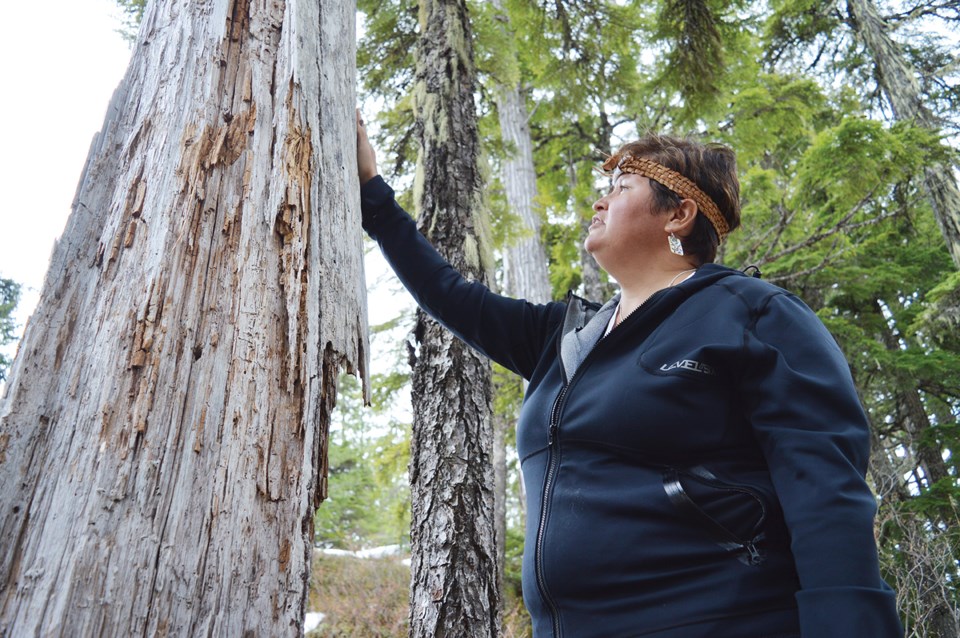Walking down the Panorama Trail at the peak of the Sea to Sky Gondola, Candace Campo touches the branches of a western hemlock and notes its droopy shape.
Back when the Creator was giving trees their pinecones, she explained, the hemlock was too eager to receive his gift, which prompted a sharp rebuke.
“Oh no, western hemlock, you can’t budge – you’ve got to go to the back of the line,” she said with a laugh, mimicking the Creator. “That’s why to this day western hemlock hangs his head in shame.”
“And it’s also why he’s got some of the smaller pinecones,” said Campo as she held out several tiny pinecones in her palm.
It’s just one of many stories that Campo, who has Squamish and Sechelt Nation ancestry, shares as part of the new Talking Trees tours she gives with the group she co-owns, Talaysay Tours.
Originally focused on providing guides for kayaking trips, the company has recently tried ascending a new peak – that of the Sea to Sky Gondola. The tours will explore the trails surrounding the Summit Lodge, and give people a view of First Nations life.
“What we really like to do is introduce our guests to the land and how the Squamish people have utilized this region for thousands of years.” she said. “The focus of the tours is the rich history of this area.”
Indeed, myth and legend seem to permeate the land when Campo is giving a tour.
As she comes to a point in the trail where the three peaks of the Stawamus Chief can be seen arching up towards the sky, she explains that at one point it was actually a village.
The Creator, she said, rewarded the town’s good deeds by turning them into a mighty cliff of granite.
It’s a common theme in indigenous lore, added Ecko Aleck, a guide on the tour who hails from the Nlaka’pamux nation. The Creator often commemorated great people by turning them into prominent landmarks, such as trees, cliffs and mountains, among other things.
But not all of Campo’s talks are dedicated to myth.
Much of the tour is spent examining the intricacies of the plant life in the area and how the First Nations were able to adapt it to their lifestyle.
Campo will often lead the group down the trail and stop at a particular tree, herb or shrub that many hikers wouldn’t bother looking at twice.
It’s a part of the experience that unlocks what would seem to be a hidden universe for those new to First Nations culture.
Placing her hand on the trunk of a cedar, Campo explains how it was considered a “tree of life” and how even things as soft and pliant as clothing could be fashioned from the hard bark.
Stopping at another tree, she explains where craftsmen would make incisions on the trunk to peel away a portion of the bark, yet still keep the tree alive. She says later that the marks borne on some of those trees are used for First Nations land claims – proof that indigenous people have been in the area for generations.
She even points out the type of moss that would serve as the best baby diaper and the best fern for gathering herring eggs.
It’s information Campo hopes to share with many of the people who step off the Sea to Sky Gondola. Having started this month, she says the tour has piqued a fair amount of interest, and she hopes it will be a permanent attraction in the area as people spread the word.
Knowing this, it’s perhaps fitting that Campo stops at another western hemlock later in the tour.
The tree’s ferns, she says, were widely considered to make the best fire signals, letting people know that something was coming.



